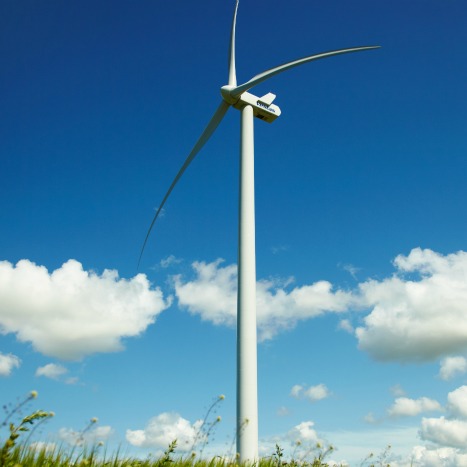 The first North American installation of the Vestas V112-3.0 MW wind turbine is scheduled to begin later this month at EDP Renewables' (EDPR) 216 MW Marble River Wind Farm, located in Clinton County, N.Y.
The first North American installation of the Vestas V112-3.0 MW wind turbine is scheduled to begin later this month at EDP Renewables' (EDPR) 216 MW Marble River Wind Farm, located in Clinton County, N.Y.
The May 21 arrival of the Vestas V112 turbines comes less than two months after the V112 caught fire at a wind farm near Lower Saxony, Germany. Vestas said the fire was caused by an arc flash, which was the result of a loose connection in the tower's harmonic filter cabinet.
Despite the V112's notoriety, Vestas says the incident will not affect the turbines that will be used at the Marble River project.
‘Vestas has discussed this issue with EDPR, and we believe there will be no impact to the Marble River project,’ a company spokesperson told NAW.
Dan Fitzgerald, project manager at EDP Renewables (EDPR), expects the Marble River project to be completed by the end of October, in time for the project to qualify for the Section 1603 cash grant. To qualify for the program, projects are required to have started construction by Dec. 31, 2011, and be completed by Dec. 31, 2012.
According to Peter Geelan, project manager at Tetra Tech Construction – the wind farm's balance-of-plant and electrical contractor – turbine testing and commissioning are slated for mid-June.
In addition to its inclusion of the V112 wind turbines, the Marble River project is notable for its geotechnical challenges, Geelan says. For instance, large tracts of wetlands surround the area.
‘It's a very moist site – if we're not in mud, we're in rock,’ Geelan explains, adding that geosynthetic materials were needed to increase the tensile strength on the access roads.
What's more, concrete needed to be added to the foundation design in areas with a high water table, Geelan says.
The moist conditions caused by local wetlands also created some permitting concerns for the U.S. Army Corps of Engineers and the New York Department of Environmental Conservation.
To reduce the project's impact on the wetlands, EDPR made modifications to the wind farm's original layout – for instance, the company reduced the number of turbines from 109 to 74. In fact, the site's moist conditions are what led EDPR to select the Vestas V112 wind turbine over its original choice, Suzlon's S88 2 MW wind turbine.
Other modifications included decreasing the length of both the proposed access roads and the buried electrical collection lines, Geelan says.
Thus far, about 20 of the 70 turbine foundations have been poured, and nearly half of the access roads have been completed, Geelan adds.
Photo credit: Vestas Wind Systems A/S



